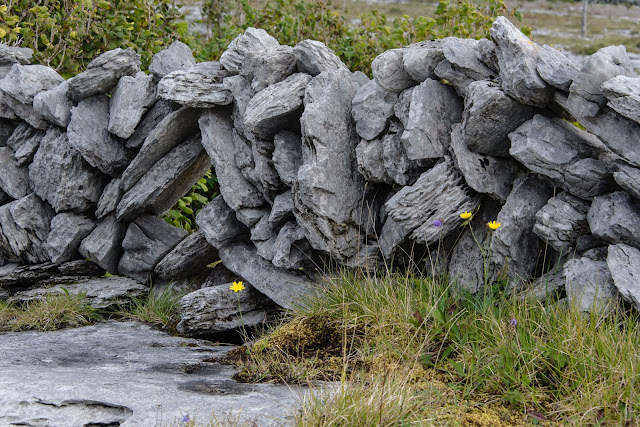IRELAND #5: THE BURREN, THE CLIFFS OF MOHER, KILLARNEY
The Burren (meaning "great rock" in Irish) is a vast limestone plateau south west of Galway in County Clare. It is a rugged almost desolate place in which few trees grow, yet other plants and flowers thrive. Glaciation has combined with wind and rain erosion to create limestone pavements with deep crevices, and even deeper caves. Strangely, the tops of hills are warmer in winter than the valleys. That is why farmers graze their cattle on this rocky high ground in winter.
In this post, I focus on our trip through the Burren, including a stop at the Pulnabrone Dolmen, and a visit to the Cliffs of Moher. At the end of our drive, we arrived in the town of Killarney, and I include some images from there.
Unfortunately, while bouncing through this day's excursions, I broke my Nikon camera and had to finish my photgraphy with my iPhone camera.
I have selected five photos to show the remote and rugged character of the Burren, perched at high elevations. These images show the tops of the limestone pavements. They also show the rock fences that the farmers use in cattle farming!
The next series of images reveals the criss-crossing cracks in the limestones which have been created by solutional erosion and glaciation. The crevices provide moist shelter for many species of plants and shrubs. Our guide, who was very entertaining, gave us the names of many plants. However, I was too busy photographing these remarkable plants to remember the names. I like the close-ups.
Eventually we drove further on the Burren, and stopped for a visit to the Pulnabrone Dolmen, a portal tomb that was built between 4900 and 6200 years ago. It consists of a 12-foot slab-like capstone supported by two portal stones. The capstone is about 6 feet from the ground. The portal stones and capstone supported a cairn with a chamber about 30 feet long. Remarkable!!!
The Cliffs of Moher gave us amazing views of the Atlantic Ocean. The cliffs themselves rise to 690 feet. The rock face reveals picturesque layers of black shale and sandstone. We fearlessly hiked along the top of the cliffs.
We lunched in a town named Kilfenora where we saw two signs that encapsulated our sense of Irishness.
On the way from the Burren to Killarney, I was suffering from "broken camera syndrome". I took these photos along the way on my iPhone. Unfortunately, I can't remember what they were. But I like these images so I am including them here.
Killarney, population15,000, is a very popular tourist centre. We stayed at the International Hotel which has modern comfort and amenities plus century-old charm and decor. This photo shows the first floor (second floor) balcony.
The local church near the hotel was a study in light and texture.
St. Mary's Church of Ireland is the cathedral church in Killarney. Built in the Neo-Gothic style, it was completed in 1855.

Muckross House, 6 kilometres from Killarney, is a 19th century manor house. It has 65 rooms, and was built in the Tudor style. So much effort went into improvements for the visit of Queen Victoria in 1861 that it sapped the wealth of the Herbert family, and they had to sell it. We had an excellent guided tour of the house.










































1 Comments:
More excellent photos from your trip, Dad.
Post a Comment
Subscribe to Post Comments [Atom]
<< Home